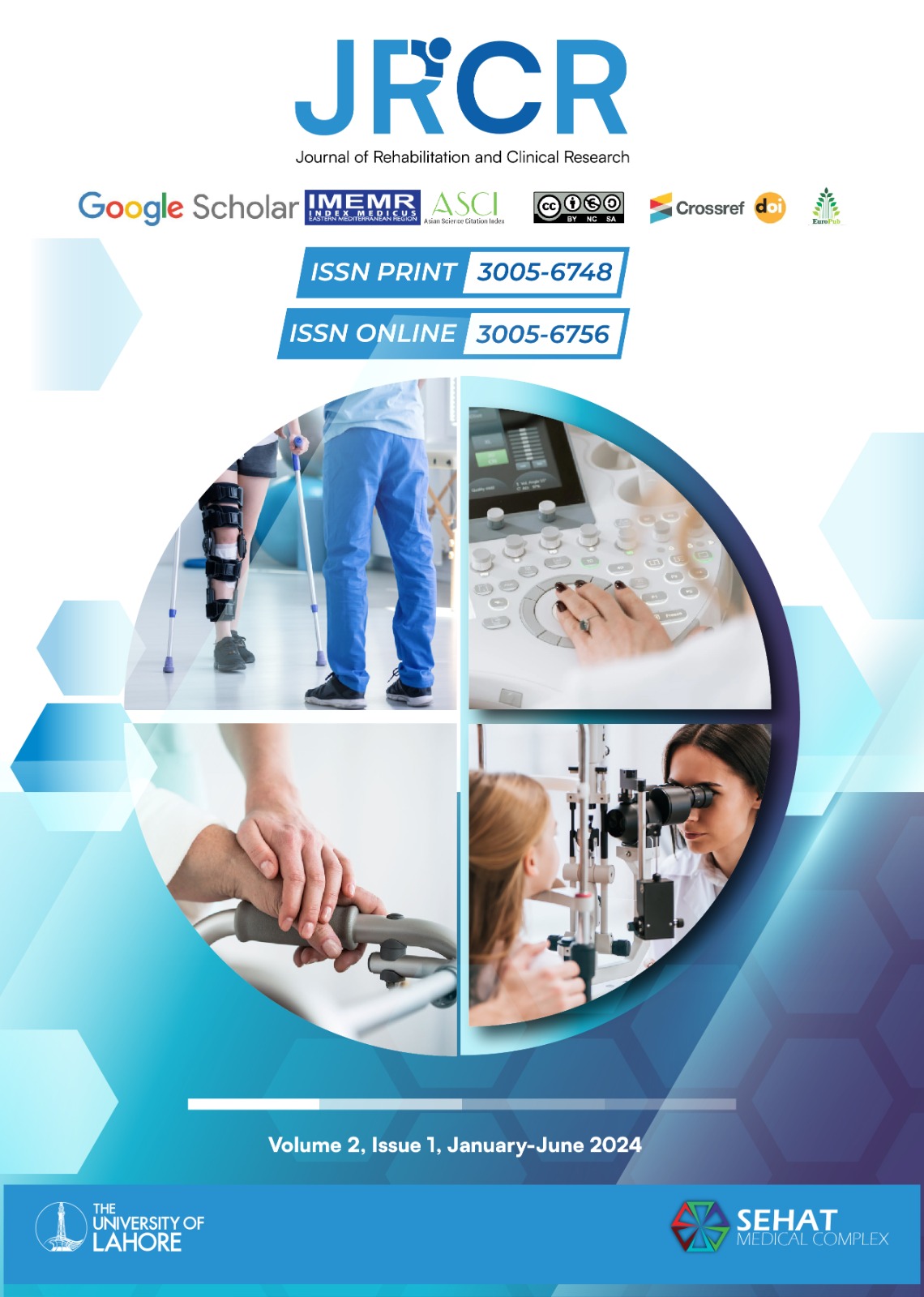Frequency of Urinary Incontinence among Elderly Population of Peshawar, Pakistan
DOI:
https://doi.org/10.61776/jrcr.v2i1.2966Keywords:
Elderly Population, Frequency and Urinary incontinenceAbstract
The objective of the current study to determine the frequency of urinary incontinence among elderly population of Peshawar, Pakistan. A descriptive cross sectional study was carried out to determine the frequency of urinary incontinence among elderly population at Naseerullah Khan Babar Memorial hospital Peshawar, Pakistan. Data was collected through a questionnaire International Consultation on Incontinence Questionnaire, including urinary incontinence participants. The sample size calculated for the research study was 377. The convenient sampling technique was used to collect data. The findings of the study provide a baseline of information about the frequency of urinary incontinence among elderly population at Naseerullah Khan Babar Memorial Hospital Peshawar Pakistan. The frequency of urinary incontinence was 68.70%. The current study shows urinary incontinence reported by every second older adult. It was concluded that among population who had reported higher urinary incontinence were females and also among subjects who’s aged were equal or greater than 50 to 60 years suffered from urinary incontinence.
Downloads
Published
How to Cite
Issue
Section
License
Copyright (c) 2024 Osama Khan, Naveed Akhtar, Inayat Ullah, Asad ullah, Muhammad Asdaq, Muhammad Faizan Khan

This work is licensed under a Creative Commons Attribution-NonCommercial-NoDerivatives 4.0 International License.
Authors retain copyright of their work and grant Journal of Rehabilitation and Clinical Research the right to publish it under a Creative Commons Attribution-NonCommercial-NoDerivatives 4.0 International (CC BY-NC-ND 4.0). This license permits sharing, copy and redistribute the material in any medium or format, provided proper attribution is given to the authors.
Authors may distribute the journal’s published version (e.g., in repositories, books, or other platforms) non-exclusively, with acknowledgment of its original publication here.
Authors are encouraged to share their work publicly (e.g., on personal websites or institutional repositories) to foster scholarly exchange.






